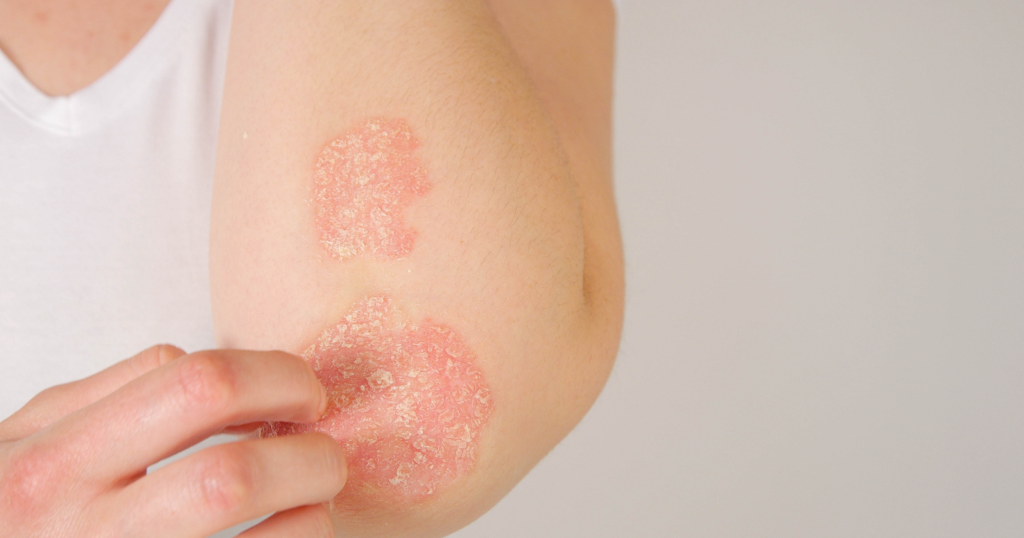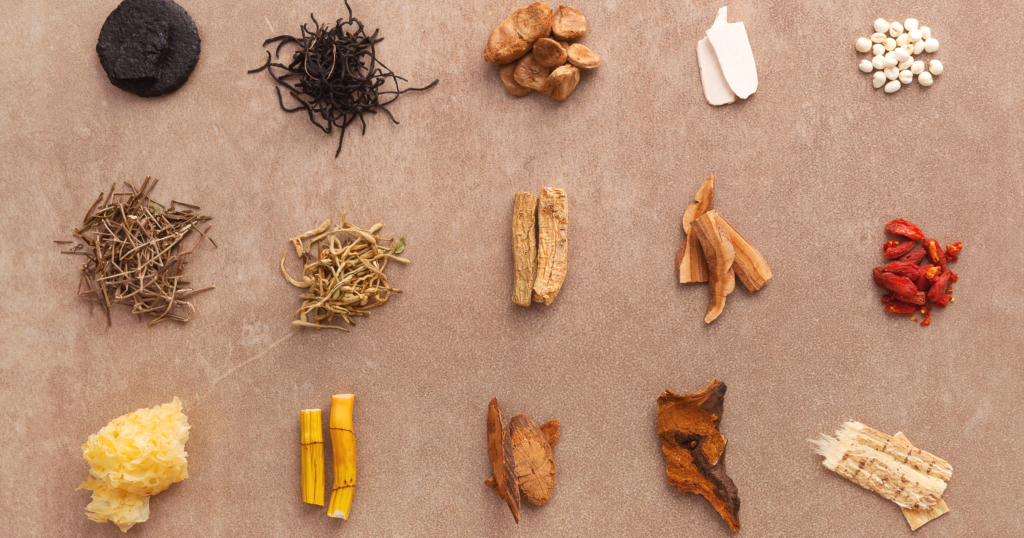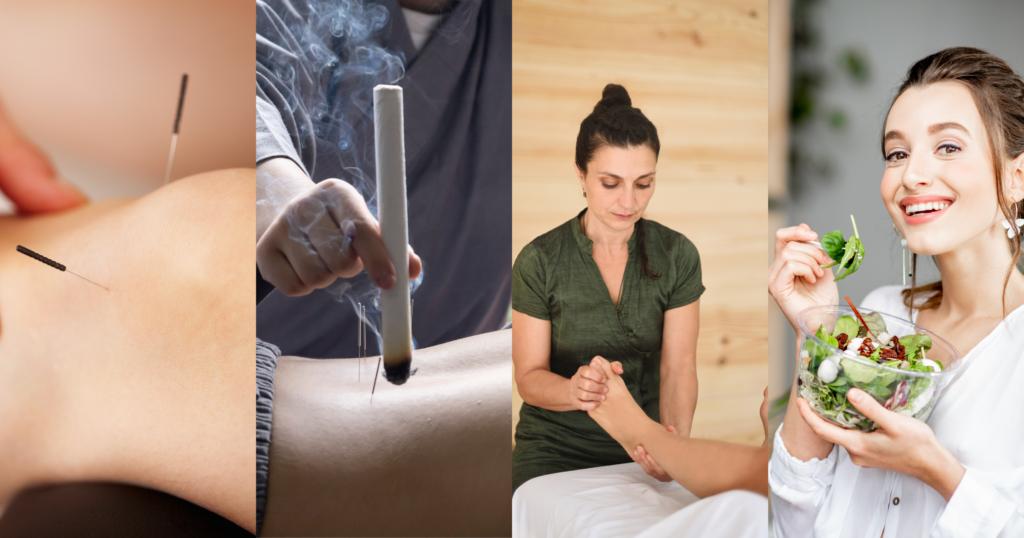Chinese Medicine for Eczema: Holistic Healing Beyond the Surface
Eczema, or atopic dermatitis, is more than just a skin condition—it’s a chronic battle that affects millions worldwide. For many, the relentless itch, redness, and discomfort disrupt sleep, strain relationships, and erode quality of life. While conventional treatments like corticosteroids and antihistamines offer relief, they often fail to address the root causes or provide long-term solutions. This is where Traditional Chinese Medicine (TCM) steps in, offering a holistic approach rooted in centuries of wisdom.
TCM views eczema not merely as a surface issue but as a manifestation of deeper imbalances within the body. By focusing on restoring harmony between Qi (vital energy), Yin and Yang, and the body’s organ systems, TCM aims to treat both the symptoms and their underlying causes. Chinese medicine approaches eczema through herbal remedies, therapies like acupuncture, dietary adjustments, and lifestyle recommendations.
Chinese Medicine for Eczema: Holistic Healing Beyond the Surface
Eczema, or atopic dermatitis, is more than just a skin condition—it’s a chronic battle that affects millions worldwide. For many, the relentless itch, redness, and discomfort disrupt sleep, strain relationships, and erode quality of life. While conventional treatments like corticosteroids and antihistamines offer relief, they often fail to address the root causes or provide long-term solutions. This is where Traditional Chinese Medicine (TCM) steps in, offering a holistic approach rooted in centuries of wisdom.
TCM views eczema not merely as a surface issue but as a manifestation of deeper imbalances within the body. By focusing on restoring harmony between Qi (vital energy), Yin and Yang, and the body’s organ systems, TCM aims to treat both the symptoms and their underlying causes. Chinese medicine approaches eczema through herbal remedies, therapies like acupuncture, dietary adjustments, and lifestyle recommendations.
Key Takeaways
- Chinese Medicine treats eczema as a result of internal imbalances, such as wind, dampness, and heat, offering a holistic approach that addresses both symptoms and root causes.
- Herbal remedies like Xiao Feng San, Ku Shen, and Huang Qin work to reduce inflammation, cool heat, and clear dampness, providing targeted relief and improving skin health.
- Acupuncture enhances circulation and regulates Qi, promoting healing from within by addressing both the physical symptoms and emotional stress that exacerbate eczema flare-ups.
- TCM integrates lifestyle and dietary adjustments, such as avoiding spicy or greasy foods and incorporating cooling herbs, to support long-term skin health and prevent recurrence of eczema symptoms.
- A personalized approach in TCM ensures treatment is tailored to individual needs, using diagnostic methods like pulse and tongue analysis to create a plan that restores balance and alleviates symptoms.
Understanding Eczema from a TCM Perspective
In TCM, eczema is not seen as a standalone condition but as an imbalance between internal and external forces. Internal factors such as weak Qi or blood deficiency can make the body susceptible to external pathogenic elements like wind, dampness, and heat. For example:
- Wind is associated with sudden flare-ups and intense itching.
- Dampness manifests as oozing lesions or swelling.
- Heat leads to redness, inflammation, and burning sensations.
These patterns often overlap, creating complex cases that require personalized treatment plans. Unlike Western medicine’s focus on suppressing symptoms, TCM seeks to restore balance by addressing these root causes—whether it’s strengthening the spleen to combat dampness or cooling the blood to alleviate heat-induced inflammation.
TCM Diagnostic Methods for Eczema
The diagnostic process in TCM is meticulous and multifaceted. Our practitioners employ four methods:
- Observation: Examining skin texture, color, and lesion patterns.
- Auscultation and Olfaction: Listening to patient complaints (e.g., itch intensity) and noting odors from affected areas.
- Inquiry: Asking about lifestyle habits, diet, emotional stressors, and sleep quality.
- Palpation: Feeling pulse patterns to assess organ health and Qi flow.
Through these techniques, our practitioners identify specific disharmony patterns—such as spleen deficiency leading to dampness or liver heat causing inflammation—and tailor treatments accordingly.
Causes, Common Areas, and Triggers
Eczema doesn’t appear randomly on the body—Traditional Chinese Medicine (TCM) sees both the location and timing of flare-ups as meaningful. Each area of the skin reflects deeper internal imbalances, and understanding the why behind eczema’s appearance is key to creating an effective treatment plan.
Causes According to TCM
In TCM, eczema may be caused by a variety of internal and external factors. Some of the most common root causes include:
- Deficiency of Qi or Blood – Weak internal systems can reduce the body’s ability to resist external pathogenic influences.
- Liver Heat – Emotional stress can lead to liver Qi stagnation, transforming into heat that rises to the skin.
- Spleen Deficiency and Dampness – A weak digestive system leads to the accumulation of dampness, which may manifest through the skin.
- Wind Invasion – Characterised by itching, rapid onset, and mobility of rashes, often triggered by environmental exposure.
Common Affected Areas and TCM Interpretation
| Area of the Body | Typical TCM Insight |
| Around the eyes | Linked to liver heat or wind-heat affecting the upper body |
| Cheeks | Often related to stomach or lung heat |
| Forehead | May reflect excess yang energy or liver fire |
| Around the mouth | Can be associated with spleen and stomach disharmony |
| Behind/in the ears | Indicates damp-heat in the gallbladder or liver channels |
| Hands and wrists | Points to wind-damp patterns or external pathogenic invasion |
| Bends of arms/knees | Common in blood deficiency or chronic dampness |
Common Triggers in TCM Perspective
Several lifestyle and environmental triggers can aggravate eczema, especially if internal imbalances are already present. These may include:
- Stress and emotional disturbances – Can disrupt liver Qi flow, leading to internal heat.
- Improper diet – Excessive spicy, greasy, or sweet foods may create dampness and heat.
- Climate factors – Hot, humid, or windy weather can aggravate underlying disharmonies.
- Allergens and irritants – Dust, pet dander, and synthetic skincare products may act as external wind or dampness invaders.
- Lack of rest – Fatigue weakens Qi, making the body more vulnerable to flare-ups.
Herbal Remedies in TCM for Eczema
Topical Herbal Applications
Traditional Chinese Medicine (TCM) offers a variety of topical remedies for eczema that are tailored to each individual’s condition. These remedies include creams, washes, compresses, and baths, which are designed to alleviate symptoms while addressing the underlying imbalance causing the skin irritation.
- Zi Cao (Radix Arnebiae): Known for its cooling and blood-nourishing properties, Zi Cao is particularly effective for inflamed, red skin. It soothes irritation and promotes healing by reducing heat and detoxifying the skin.
- Huang Bai (Cortex Phellodendri): This herb targets damp-heat conditions often seen in eczema, offering antibacterial and anti-inflammatory benefits. It is frequently used in topical formulations to reduce swelling and prevent infection.
- Ku Shen (Radix Sophorae Flavescentis): Ku Shen is a powerful herb for relieving itching while clearing heat and drying dampness. Its anti-inflammatory properties make it a staple for eczema treatment, especially when combined with other herbs.
- Qing Dai (Indigo Naturalis): A blue-green powder with cooling and detoxifying effects, Qing Dai is used for severe eczema lesions. It helps reduce inflammation and calm irritated skin, making it ideal for acute flare-ups.
These topical applications are not one-size-fits-all; they are customized based on the individual’s specific TCM pattern of disharmony—whether it involves excess heat, dampness, or wind. This personalized approach ensures that the treatment not only alleviates symptoms but also addresses the root cause of the condition.
Internal Herbal Formulas
While topical treatments provide relief on the surface, internal herbal formulas work synergistically to address the deeper imbalances contributing to eczema. These formulas consist of carefully selected herbs that target patterns such as wind-damp-heat or blood deficiency.
- Xiao Feng San (Eliminate Wind Powder): This classic formula is widely used for eczema caused by wind-damp-heat patterns. It combines herbs like Ku Shen (Sophora root) and Jing Jie (Schizonepeta bud) to reduce itching, inflammation, and bacterial growth while dispelling wind and dampness.
- Dang Gui Yin Zi: For cases involving blood deficiency and dryness-related itching, this formula nourishes the blood while soothing irritation. Dang Gui (Angelica root) plays a central role in improving circulation and alleviating dryness.
- Shi Wei Bai Du San (Ten Flavor Decoction to Overcome Toxicity): This formula addresses toxic heat accumulation in stubborn eczema cases. It includes herbs like Huang Qin (Scutellaria root) and Lian Qiao (Forsythia fruit), which have anti-inflammatory and antibacterial properties.
Internal herbal treatments are tailored to the patient’s unique presentation of eczema. For example, modifications may be made to address acute flare-ups versus chronic conditions or to account for predominant heat versus dampness patterns.
Other TCM Therapies for Eczema
Acupuncture
Acupuncture is a cornerstone of TCM for eczema, targeting specific acupoints to regulate Qi flow and restore balance. Points like SP10 (Xuehai) clear heat from the blood to reduce inflammation, while LI11 (Quchi) alleviates itching and redness by cooling excessive heat. Research shows that acupuncture can improve skin barrier function and reduce itch severity, making it a valuable complement to herbal treatments.
Moxibustion
Moxibustion involves burning dried mugwort near acupoints to stimulate circulation and warm areas affected by cold or damp patterns. This therapy is particularly beneficial for patients with chronic swelling or sluggish circulation, as it enhances Qi flow and reduces stagnation. Its warming effect can also help alleviate eczema symptoms linked to cold-induced imbalances.
Tui Na Massage
Tui Na, or Chinese medical massage, is designed to improve circulation and reduce inflammation in eczema patients. Specific techniques focus on stimulating meridians associated with skin health, helping to relieve itching and promote healing. This therapy is often combined with other treatments to enhance overall effectiveness.
Dietary Therapy
Diet plays a pivotal role in managing eczema through TCM principles. Patients are advised to avoid spicy, greasy, and processed foods that exacerbate dampness or heat imbalances, while incorporating cooling foods like cucumber and blood-nourishing options such as black sesame seeds. The concept of food energetics ensures that dietary adjustments are personalized to align with each patient’s constitution and eczema pattern.
Scientific Evidence for TCM in Eczema Treatment
Modern research has increasingly validated the efficacy of Traditional Chinese Medicine (TCM) in managing eczema. Studies on herbs such as Ku Shen (Radix Sophorae Flavescentis) reveal its anti-inflammatory effects, particularly against Staphylococcus aureus, a common bacteria linked to eczema flare-ups. Clinical trials also highlight acupuncture’s ability to reduce itch severity and improve sleep quality, offering promising relief for eczema patients battling chronic discomfort. Furthermore, meta-analyses demonstrate that integrating TCM with Western medicine can lead to higher cure rates, reduced lesion areas, and improved pruritus management compared to conventional treatments alone.
Safety and Precautions
Traditional Chinese Medicine (TCM) treatments are generally safe when administered by our qualified practitioners, offering a natural and personalized approach to health. However, ensuring safety requires attention to a few key practices:
- Consultation with professionals: Some herbs may cause allergic reactions or interact with medications, so it’s vital to consult both your doctor and our licensed herbalist before starting treatment.
- Quality sourcing: Always source herbs from reputable suppliers to avoid risks of contamination with heavy metals, pesticides, or toxins. Proper manufacturing practices help ensure the purity and safety of herbal products.
- Pregnancy precautions: Acupuncture and certain herbal remedies should be avoided during pregnancy unless explicitly recommended by our trained professional to prevent complications.
By prioritizing personalization and working with our qualified practitioners, TCM treatments can align with your unique health profile while minimizing risks.
Finding Lasting Relief with TCM for Eczema
Eczema can feel like an uphill battle—but you don’t have to face it alone or rely solely on conventional methods that may fall short of addressing its root causes. Traditional Chinese Medicine offers a holistic alternative grounded in ancient wisdom yet supported by modern research. From herbal remedies tailored to your constitution to therapies like acupuncture that restore balance from within, TCM provides hope for lasting relief.
At ACA Acupuncture & Wellness, we believe in empowering our patients through personalized care that bridges tradition with innovation. If you’re ready to explore how Chinese medicine can transform your eczema journey, reach out today—we’re here to help you find balance and reclaim your well-being.
Source:
Chen, H., Lin, Y., Hu, S., Yang, S., Chen, J., & Chen, Y. (2015). Identifying Chinese Herbal Medicine Network for Eczema: Implications from a Nationwide Prescription Database. Evidence-based Complementary and Alternative Medicine, 2015, 1–9. https://doi.org/10.1155/2015/347164
Frequently Asked Questions
What Chinese medicine is good for eczema?
Chinese medicine offers several effective treatments for eczema, including herbal remedies like Xiao Feng San (Eliminate Wind Powder), which targets wind-damp-heat patterns common in eczema flare-ups. Herbs such as Ku Shen (Sophora root) and Huang Qin (Scutellaria root) are also used for their anti-inflammatory and antibacterial properties. These treatments are often combined with therapies like acupuncture to provide comprehensive relief from eczema symptoms.
How do Chinese people treat eczema?
In China, eczema is typically treated with a combination of herbal remedies, acupuncture, and lifestyle adjustments. Practitioners use a holistic approach, tailoring treatments to address specific patterns of imbalance such as wind, dampness, or heat. This personalized care often includes topical applications like herbal creams and baths, alongside internal herbal formulas to restore balance and alleviate symptoms.
What is the root cause of eczema?
From a Traditional Chinese Medicine (TCM) perspective, eczema is often attributed to internal imbalances involving wind, dampness, heat, or blood deficiency. These imbalances can be exacerbated by external factors such as environmental allergens or stress. TCM practitioners believe that addressing these underlying patterns is crucial for effective long-term management of eczema.
What Chinese tea is good for eczema?
While specific teas are not commonly highlighted for eczema treatment, herbal teas that cool and nourish the skin can be beneficial. For example, teas made from herbs like Huang Qin (Scutellaria root) or Zi Cao (Radix Arnebiae) might help reduce inflammation and promote healing. These teas can be part of a broader dietary approach to managing eczema symptoms.
What herb gets rid of eczema?
No single herb can completely eliminate eczema, but certain herbs are known for their effectiveness in managing symptoms. Ku Shen (Sophora root) is particularly noted for its ability to relieve itching and reduce inflammation, making it a valuable component in eczema treatment. Additionally, Qing Dai (Indigo Naturalis) is used for its detoxifying properties in severe cases.
Which deficiency causes eczema?
In TCM, eczema is often linked to deficiencies such as blood deficiency or spleen deficiency, which can lead to imbalances like dampness or heat accumulation. Blood deficiency may cause dryness and itching, while spleen deficiency can result in dampness-related skin issues. Addressing these deficiencies is a key part of TCM’s holistic approach to treating eczema.
Contact ACA Acupuncture & Wellness
Get in Touch
Newsletter Sign Up
LOCATIONS
MANHATTAN
QUEENS
NEW JERSEY
CALIFORNIA

ACA Franchise Opportunities
The over $4 billion US acupuncture market offers a great opportunity with over 10% annual growth rates and a continuing flow of new patients interested in the benefits of acupuncture.






